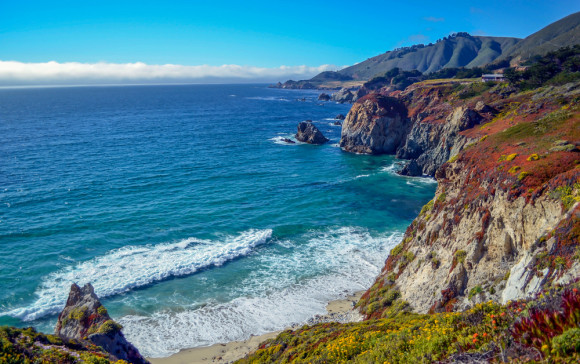Climate scientists have long warned of a rise in sea level as global warming melts the world’s glaciers. But while the level has been increasing at about 3.5 millimeters a year, the rate of increase itself has fluctuated, leading some people to doubt the warnings and the broader impact of rising carbon emissions.
Fresh evidence, in a study published today in Scientific Reports, suggests the scientists were right, and that satellite measurements have been distorted by the eruption in 1991 of Mount Pinatubo in the Philippines.
The volcanic eruption, the second-largest of the 20th century, is estimated to have spewed almost 20 million tons of sulfur dioxide into the stratosphere, lowering global temperatures by about 1 degree Fahrenheit from 1991 to 1993, as gas and dust particles blocked solar radiation, and causing sea levels to drop. The researchers, from the National Center for Atmospheric Research, the University of Colorado at Boulder, and Old Dominion University, used models to calculate the impact of the Pinatubo eruption and found that sea levels fell about six millimeters.
The confusion lies in the timing. The six-millimeter drop took place right after satellite measurements of the sea level began, in 1993, followed by a bounceback in the sea level. From today’s vantage, that makes it look like the rate of increase hasn’t risen over the past few decades. In fact, it makes it look as if it’s fallen. If you take the eruption out, the satellite surveillance would show a clear acceleration in the rate, the researchers conclude.
Pinatubo “doesn’t affect the overall trend between the two endpoints, but it does affect how you estimate the acceleration, because of the pattern of rise during that interval,” said NCAR scientist John Fasullo, who led the study.
 Funded by NASA, the U.S. Department of Energy, and the National Science Foundation, the study used historical tide gauge records, employed before satellites to estimate sea levels, and ran NCAR’s Community Earth System Model 40 times with various starting conditions. To assess the impact of Mount Pinatubo’s eruption, the researchers used a separate set of model simulations that omitted particles sent into the atmosphere by volcanoes. Then they compared the two.
Funded by NASA, the U.S. Department of Energy, and the National Science Foundation, the study used historical tide gauge records, employed before satellites to estimate sea levels, and ran NCAR’s Community Earth System Model 40 times with various starting conditions. To assess the impact of Mount Pinatubo’s eruption, the researchers used a separate set of model simulations that omitted particles sent into the atmosphere by volcanoes. Then they compared the two.
Other recent volcanic eruptions haven’t had a major impact on sea levels because of the specific conditions needed to lower global temperatures, said Benjamin Horton, a professor in Rutgers University’s Department of Marine and Coastal Sciences, who wasn’t involved in the study. Horton is an author of a study published in February showing that the rise in sea level in the 20th century was faster than in any of the previous 27 centuries.
It has to be “a violent enough eruption to send the aerosols and dust high into our atmosphere. It has to be the right type of aerosols and dust to reflect incoming solar radiation,” Horton said. “The eruption has to take place in the tropics so upper atmosphere circulations spread the aerosols throughout the globe.”
“Sea-level rise is one of the biggest, if not the biggest, threat to the socioeconomic prosperity of our planet,” he added.
In the coming decades we could see eruptions similar in environmental impact to Pinatubo’s, Fasullo said. None occurred between 1920 and 1960, but three happened between 1960 and 2000, so the rate of increase could very well shift again.
Nor are volcanoes the only events that can muddy the picture—and fuel arguments against the science showing the impact of carbon emissions from human activity on climate change. Between 2010 and 2011, ocean levels fell drastically because of La Niña and Australia’s unique surface characteristics.
But without irregular events like Pinatubo, Fasullo said, the rate of sea-level increase is not only rising, threatening coastal regions. It’s going to start increasing exponentially.
“It sounds like a small number,” he said of the 3.5-millimeter annual increase in sea levels, but “when you have exponential growth, that can quickly become a big number.”
Topics Trends Pricing Trends
Was this article valuable?
Here are more articles you may enjoy.



 Disney Worker Injured Trying to Stop Runaway Boulder at Indiana Jones Show
Disney Worker Injured Trying to Stop Runaway Boulder at Indiana Jones Show  FBI Involved After Two Florida Injury Lawyers Go Missing From Fishing Trip
FBI Involved After Two Florida Injury Lawyers Go Missing From Fishing Trip  Relief But Questions on Agents’ Duties to Insureds After Florida Court Ruling
Relief But Questions on Agents’ Duties to Insureds After Florida Court Ruling  Howden Buys M&A Insurance Broker Atlantic Group in US Expansion
Howden Buys M&A Insurance Broker Atlantic Group in US Expansion 

